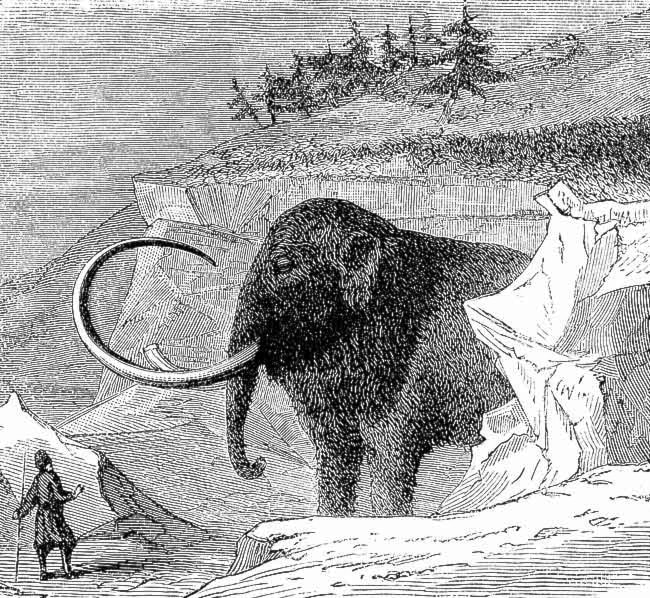It’s easy to blame gas-sucking SUVs, plastic grocery bags and chemical-producing factories for warming the Earth.
But when, exactly, did people start influencing climate change?
That’s the question that sparked researchers to point the finger at a few hunter-gatherers and giant woolly mammoths that existed 12,000 years ago in the Yukon, Alaska and Siberia.
“It’s just deeply interesting to think about the fact that, as a species, we’ve been modifying the way that the Earth system works over thousands of years,” said Chris Field, director of the Carnegie Institution’s Department of Global Ecology.
As the human population grew, mammoths became scarcer. At the same time, the birch tree population increased, which in turn caused warmer weather.
“In general, the pollen indicating the presence of birch trees increased dramatically around the time that mammoths disappeared,” said Field.
His team, from the Carnegie Institution for Science in Stanford, California, studied elephants in Africa. The animals either eat the leaves or push down the trees. They used that data to estimate how many trees mammoths might have destroyed in high latitudes.
As fewer woolly mammoths roamed the earth, the trees rebounded and the forests became more dense. Trees in high latitudes create a warmer climate because they absorb sunlight and create warmer air.
“And what we found is that the difference in the number of trees in a situation with mammoths and without mammoths was enough to make a small impact on climate,” said Field.
It was an increase of only a few tenths of a degree, but that’s enough to make the researchers think humans had a “measurable impact” on global climate as early as 12,000 years ago.
Recent research by William Ruddiman, who studies climate change throughout Earth’s history, argues humans started affecting climate change when agriculture was invented 7,000 to 8,000 years ago. When humans cut down significant areas of forest, carbon was released into the atmosphere, he says. Cultivating rice in paddy fields released methane.
“We used climate models to look at some of Ruddiman’s arguments and we weren’t convinced. But then we started stepping back and thinking, ‘When were the effects of humans that had the potential to be really big?’” said Field. “And we decided that this mammoth effect had the possibility of being measurable much before the invention of agriculture.”
It’s prehistoric information but lets us better understand the full range of ways the climate can get changed. It’s also an important part of history and our planet, said Field.
If Field’s research and findings are correct, “it would have resulted in a Yukon territory that was a little bit warmer 12,000 years ago than it would have been.
The effects are largest in Siberia, but detectable in the territory.
“I don’t think if you were wandering around the Yukon 12,000 years ago, you would have said, ‘Wow, the climate is dramatically different as a consequence of the disappearance of the mammoth.’ If you were a resident of the Yukon 12,000 years ago, you would be much more impacted that there were fewer mammoths to eat than by the climate change.”
Although the consequence of mammoth-hunting on the Earth’s temperature is small, it’s significant research.
“At least for me, to think that a few primitive humans had the leverage to influence climate just really leads to an appreciation of the fact that now, with so many people and so much technology, our potential influence is just dramatically greater.”
Contact Larissa Robyn Johnston at
larissaj@yukon-news.com
